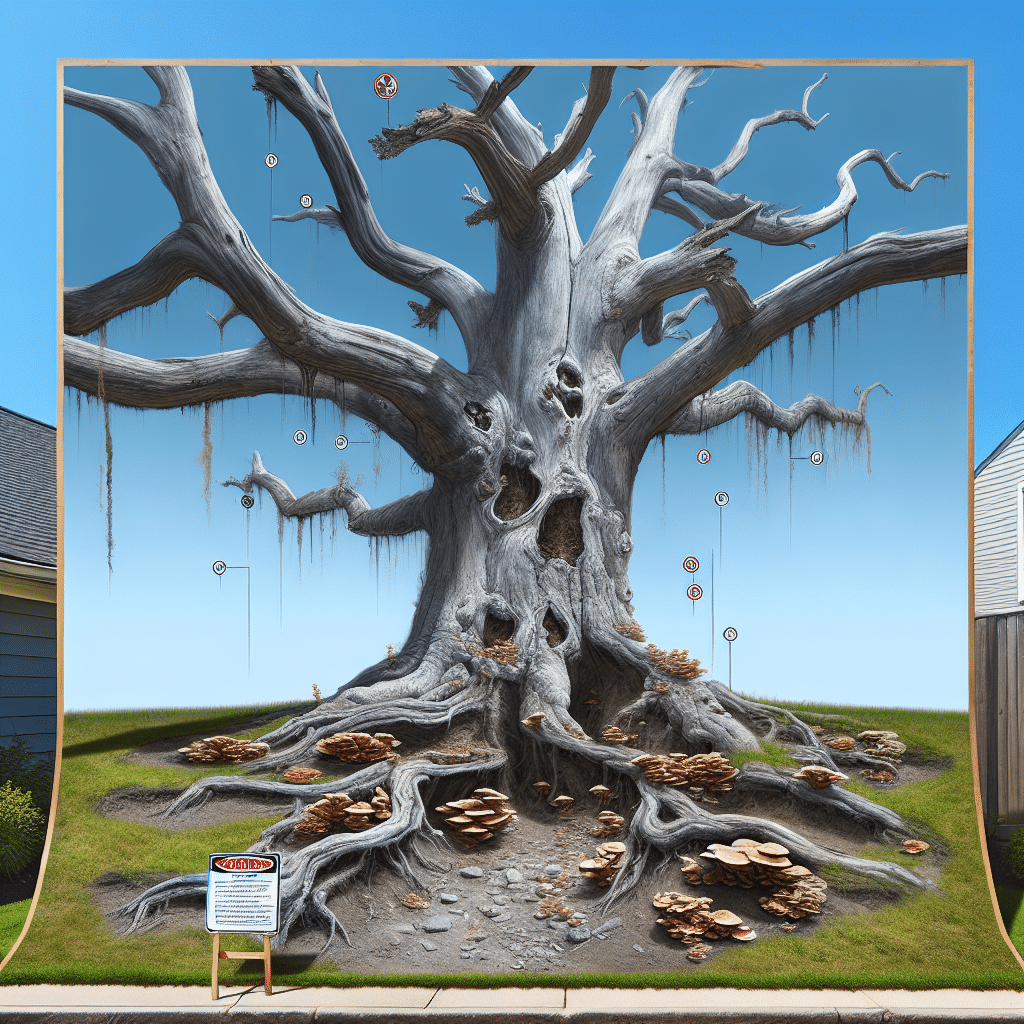
Table of Contents
- Recognize Hazardous Trees: Top Warning Signs for Your Safety
- Why Recognizing Hazardous Trees is Important
- Top Warning Signs of a Hazardous Tree
- 1. Dead or Dying Branches
- 2. Cracks or Deep Splits in the Trunk
- 3. Fungi Growth Around the Base
- 4. Leaning Trees
- 5. Root Damage
- Taking Action
- Understanding Local Regulations in Queensland
- Conclusion: Keeping Your Property Safe and Beautiful
Recognize Hazardous Trees: Top Warning Signs for Your Safety
Living in beautiful Australia provides us with a remarkable opportunity to enjoy lush green landscapes and thriving trees. However, trees, while beautiful, can sometimes pose a significant hazard if not properly taken care of. Understanding how to recognize a dangerous tree is crucial for ensuring the safety of your family, home, and community. In this article, we’ll guide you through the warning signs to look out for so you can take action before any potential hazards arise.
Why Recognizing Hazardous Trees is Important
Trees provide innumerable benefits, from offering shade and habitat to supporting the environment with clean air. However, when a tree becomes hazardous, it’s no longer just a beautiful part of your yard — it becomes a liability. Falling branches or trees can damage property, cause injuries, or even result in legal consequences. By knowing the signs of a potentially dangerous tree, you can preserve the benefits of having trees while safeguarding your home and loved ones.
Top Warning Signs of a Hazardous Tree
It’s essential to regularly inspect your trees and look for certain signs that may indicate they’re becoming a hazard. Here are the top signs you should be vigilant about:
1. Dead or Dying Branches
One of the most apparent indicators of a dangerous tree is dead or dying branches. Branches that appear dry, brittle, or devoid of foliage could fall unexpectedly, especially during high winds or storms. Ensure you routinely check and prune dead branches to prevent hazards.
2. Cracks or Deep Splits in the Trunk
Visually inspect your tree’s trunk for any signs of splitting, which can suggest structural weakness. Cracks are often a precursor to more severe issues, as they could mean the tree is under undue stress and might fail.
3. Fungi Growth Around the Base
The presence of mushroom-like fungi around the base of a tree often indicates the internal decay of the tree. While not all fungi are harmful, they could compromise the tree’s integrity, making it prone to toppling over.
4. Leaning Trees
A leaning tree might not always be dangerous, but a rapid change in angle could warrant concern. If a previously stable tree begins to lean significantly, it might be suffering from root damage or structural instability.
5. Root Damage
Healthy roots are critical for a tree’s strength. Signs of root damage include lifted soil or exposed roots. If construction or landscaping activities have recently occurred nearby, roots might have been inadvertently damaged, which could affect stability.
Taking Action
Regular maintenance and observation can help mitigate potential hazards associated with dangerous trees. Here are a few proactive steps you can take:
- Regular Inspections: Conduct seasonal checks for signs of dead branches, fungi, and structural cracks.
- Engage Professionals: Whenever you’re unsure about a tree’s condition, consult with a certified arborist. They possess the expertise to assess tree health and recommend safe management practices.
- Pruning and Trimming: Keep trees healthy and encourage growth in a stable structure by pruning regularly.
- Consider Removal: If a tree poses a severe risk and cannot be salvaged, safe removal might be necessary to prevent accidents.
Understanding Local Regulations in Queensland
In Queensland, tree management and removal are subject to strict regulations. It is critical to follow these guidelines to ensure compliance and prevent fines. When in doubt, consult your local council or a professional to understand the legal framework surrounding tree removal and property safety.
At Brisbane South Skip Bins, our team is well-versed with the local regulations and can provide guidance on how to dispose of any trees or large amounts of debris safely and responsibly. We serve the Brisbane, Logan, and Ipswich areas, delivering dependable skip bin services for all your garden waste needs.
Conclusion: Keeping Your Property Safe and Beautiful
Maintaining the beauty and safety of your outdoor space is a balance that can be achieved with diligence and the right knowledge. By identifying dangerous trees promptly and taking necessary action, you’ll ensure the ongoing safety and aesthetic appeal of your property.
Whether you need assistance in managing garden waste or removing hazardous trees, Brisbane South Skip Bins is here to help. Our reliable and affordable services make garden cleanup straightforward and hassle-free, leaving you more time to appreciate the natural beauty around you.
Be proactive, stay informed, and keep your surroundings safe — for peace of mind and the continued enjoyment of your lush Australian landscape.
About Brisbane South Skip Bins
Brisbane South Skip Bins offers comprehensive Skip Bin Hire Services for local household, Industrial, and commercial clean up. Affordable Skip Bin Hire – Brisbane South, Logan, Beaudesert and Ipswich
We can help you get rid of all types of unwanted rubbish, making the removal process easy, and saving you from having to load up trailers and make multiple trips to the rubbish tip.
Whether you’re renovating, landscaping, or doing a garden cleanout, we can take care of all your waste materials and unwanted items.
Our skip bins come in a range of sizes to accommodate all your removal needs.
Talk to Mick 0466 776 314 for help choosing the right type skip bin for your needs and save you money.
https://www.brisbanesouthskipbins.com.au/
#skipbinhirebrisbane #skipbinhirelogan #skipbinhirebeaudesert #skipbinhireipswich








